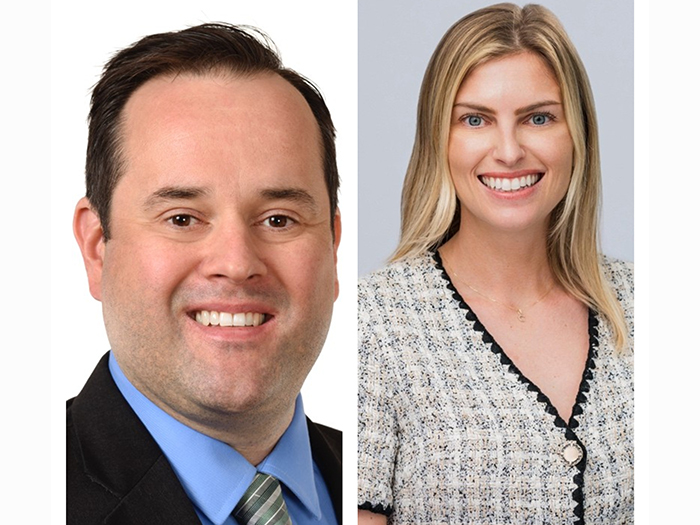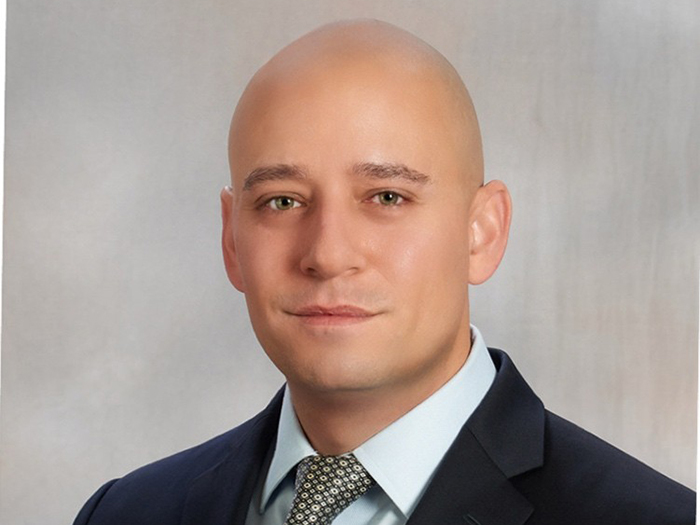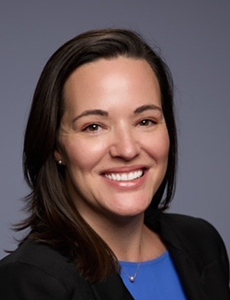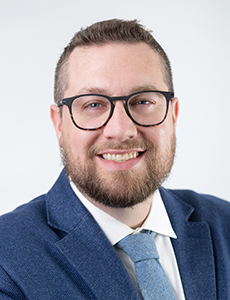How AXA XL’s Rose Hall Pioneered a Predict & Prevent Model in Insurance
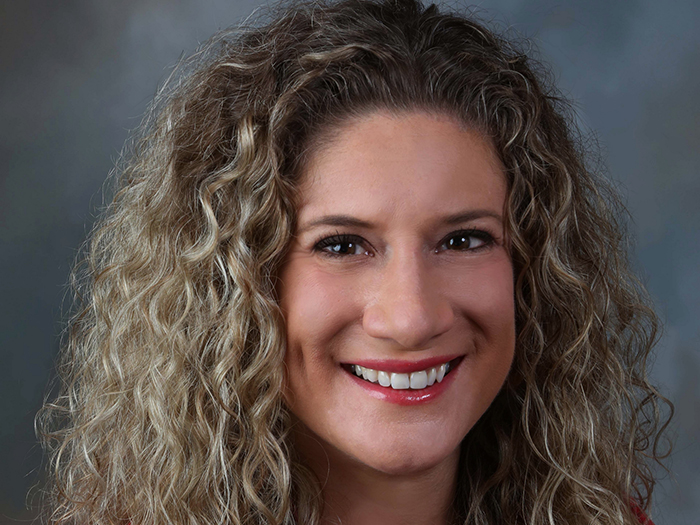
Insureds want solutions, and their insurance partners are constantly looking for ways to make things happen.
Rose Hall is one insurance partner who has a keen sense of what solutions look like. Her efforts, backed by her team at AXA XL, have become a prime example of how preventing losses by using the resources, technology and knowledge available can be a boon to business and client success alike.
With a background in civil engineering, Hall was hired by then-XL Catlin as a construction engineer and soon promoted to vice president, head of construction innovation, to help the insurer’s construction clients with some of their biggest risks.
“I took the interview and very quickly was endeared to the people here and what they were doing,” she recalled.
Through careful review, utilization of her deep industry knowledge and a penchant for solving problems, Hall dove deep into the program, where “I saw some opportunities for the industry to up its game,” she said.
“Construction’s a legacy industry, just like insurance. And I said, well, what’s going to be next? Contractors have been asking us for years how to help them manage their risk. But managing risk is starting to integrate technology. It’s starting to integrate innovation, different ways of building, like modular and prefabrication. There’s a lot that’s changing.”
Customers were coming for more than risk management; they were coming for innovation — solutions for how to best integrate budding technologies into their tried-and-true risk prevention programs.
“We needed to help this industry elevate to the next level. Contractors were looking for leadership in this space, and we could see a cross section of their peers that they could never see on their own” Hall said.
The AXA XL Construction Ecosystem was born. An advisory offering from the insurer, this ecosystem connected insureds to professionals who had prime advice for their biggest risks, as well as bridged the gap between insureds and some of the best technology-based solutions from vetted and approved third parties.
It proved a successful endeavor for all involved.
First introduced in 2020, the ecosystem has since blossomed into the AXA XL Ecosystem, a growing network of tech partners, insureds and industry professionals across many lines, from construction to property, environmental, professional liability, cyber and more.
Today, heading this effort as SVP, head of innovation for the Americas, Hall said expanding the ecosystem to encompass more lines of business is giving insureds those solutions they’ve been vying for.
And “we are breaking down silos both internally and for our customers” by creating this network, she said.
A Rose in Bloom
Before the AXA XL Ecosystem could become what it is today, a few things had to fall into place, starting with Hall herself. Like so many in this industry, she fell into insurance after spending her first few years out of school in another field entirely.
“My undergrad and my graduate degrees are in civil engineering, and I came up through the ranks in design and construction, project management, estimating [and] purchasing, and finally in risk management at Turner Construction,” she said.
Turner Construction is an American-based international construction company that “completes $15 billion of construction on 1,500 projects each year,” per the company’s site.
For the first four years at Turner, Hall was “building buildings,” as she put it. When the opportunity for change came, she jumped right in — making her way into risk management.
“My role was to liaise between the operations teams actually building the buildings and our risk management office, our insurance partners and brokers,” she said. “We had 40 business units across the United States, and it was our job to teach those teams — who are brilliant at building buildings — how to actually manage the risk of building buildings.”
Construction can be a dangerous industry. One false step, one overlooked safety measure, and a building can come crumbling down. Proper risk management is paramount.
“The industry really has to protect its interests, it has to protect its people, it has to protect its bottom line, so that they’re there the next day to build the next building,” Hall said. “Otherwise, we don’t have safe places to work, play and live.”
This role in risk management introduced Hall to the career possibilities out there for her. It also gave her a great view on how managing risk can act as the front end of prevention.
“The claim is what happens when things go wrong,” she added. For her, witnessing the back end was a crucial step in getting the full picture of risk management. After leaving Turner, she spent another four years working as an expert witness for claims and litigation related to construction.
That’s when she got the call from XL Catlin.
“I spent the first three years here as a risk engineer … helping some of the top names in construction,” said Hall. “I got to help them figure out how to manage their risk by sharing best practices and really supporting a whole industry instead of just helping one company.”
It was the perfect fit for Hall — someone who is driven by her desire to help and by her keen sense of innovation.
Nurturing a Whole Ecosystem
Once Hall was firmly rooted at AXA XL and the plan to create a better risk prevention ecosystem for insureds was decided, the team had to figure out what that meant when put into practice.
Innovation and solution providing may be the aim, but every big project has to start somewhere. Technology companies hold a lot of promise for insureds, but the pressure point insureds face is in knowing whether they’re finding the right tech for their risk portfolio.
Hall saw opportunity here to build out the ecosystem.
“We started looking at technologies that our customers were already using, because that’s the biggest proof point. If our clients are using them and are happy with them, that means that they’re a good solution for that industry,” Hall explained.
The idea of the ecosystem was not to endorse one solution over another; the idea was to find what was working and foster relationships between insured and these potential partners if they wished to do so.
As a savvy risk professional, Hall also understood that any change to a client’s risk management approach involved a price. It was important to build an ecosystem with options — from solutions offered for risks as straightforward as, say, a water leak, down to risks viewed from an enterprise perspective.
“The biggest criteria for selection for us became, is it a valuable solution for the industry? Does it solve a problem? And does it reduce risk?” said Hall.
“Risk management is an art because it is relative to each business’s risk tolerance … Not every solution is right for every client, and it all depends on how they choose to manage their risk.”
Keeping that in mind, the team began vetting potential tech partners. They reviewed hundreds of technologies out there, carefully looking into what was being offered, whether the tech made good on its promises, how clients utilized it and whether customer problems were actually getting solved.
When the ecosystem was still centered on construction, the team reviewed more than 600 solutions and narrowed down its list of “Preferred Partners” to just 35. Now that AXA XL is breaking down the silos between lines, the ecosystem team has reviewed nearly 800 potential solutions and is expanding the preferred partners list slowly and methodically across the other business risks that clients face.
Utilization, then, became the next phase for the AXA XL Ecosystem team.
“We have regular touchpoints with our clients all the time,” said Hall. “Our underwriters and our risk consultants are hearing our clients’ problems every day.”
The underwriters will turn to the ecosystem to ask about the potential partnerships available for a client. What does Hall and her team recommend for the client?
“It’s part of our natural discussions with our customers to help them better their risk and grow their businesses. We have actual answers to these questions, not just, ‘Well, you should have less water leaks.’ Now we can say we have three technologies that can help you better manage your water leaks.”
The Tech That Makes the Cut
Hall shared that, with such a large ecosystem available for clients, she’s seen a few patterns develop over the years in terms of utilization.
Among AXA XL’s clients, four areas or categories — worker wearables, water mitigation, imagery and fleet telematics/advanced driver assistance systems — are the most prevalent risk-reducing technology services requested. Hall believes these four categories align with today’s large focus on ESG.
“A lot of these have ESG plays to them as well. If you think about monitoring your water to mitigate water leaks, you’re also managing your water flow and potentially conserving water. And that’s got an environmental component to it,” she explained.
“When you’re thinking about workplace safety, we’re thinking about keeping our humans safe, protecting humans, and that’s your S for ‘society’ in your ESG.”
And finally, “when you consider using technology to help build your business and reduce your risk, all of that data captured in that process can help put some quantifiable measurement to your governance, the G in ESG,” she said.
For the actual technology involved, Hall further broke down what it is clients are searching for.
Workplace safety often encompasses wearables, she said, particularly ones that help cue a worker when they’re lifting improperly or moving in a way that could cause injury.
“StrongArm Technologies is a great example,” she shared. “They have a robust product for helping humans lift more safely and move more safely, and then coaching them through unsafe trends.”
Clients are also looking for closed-circuit cameras enabled by AI to identify workplace safety risks, like spotting a puddle in the middle of an aisle to potentially prevent a slip.
“Intenseye is a tech we use that we like for that one,” she said.
Samsara is another tech partner Hall highlighted for its advanced driver assistance systems, or ADAS. Clients want telematics capabilities that go beyond data collection; they’re looking for tech that interacts with drivers, all in an effort to promote safety on the road.
“ADAS has the ability to alert drivers to hazards. It might be radar that tells them when they’re backing up too closely to something. The steering wheel might buzz or the vehicle might beep if the driver is departing lanes without a blinker,” she explained.
The list goes on and on, but one thing remains true of all the technologies available through the ecosystem: There’s a concerted effort to get ahead of clients’ risks and prevent losses before they have the chance to occur, which is something that benefits everyone in the risk mitigation equation.
A Bit of Predict and Prevent
Risks today are growing at a rapid pace, almost to the point where accelerating losses could possibly outstrip coverage capacity.
Look at natural catastrophes as a prime example: 2022 saw 14 named storms during the Atlantic hurricane season, and insured losses close to $120 billion. Cal-Fire reported an estimated 363,939 acres burned, 876 structures damaged or destroyed and nine lives lost during the 2022 wildfire season.
The traditional method of detect-and-repair is becoming harder and harder to fall back on, particularly when losses far exceed expectations. More clients are looking for solutions that predict and prevent their potential losses.
Predict & Prevent™ as a concept is starting to take shape in insurance as well, and the AXA XL Ecosystem fits the mold.
“We are keen to help the customer prevent first and foremost,” said Hall.
“As an industry, we have a lot of unstructured data,” meaning that when data collection began years ago, insurance companies didn’t have an exact idea as to what to use it for, just that it was a good idea to record and keep.
“As a business, we could not possibly know what kind of data we would need in 2023 when we were collecting it in 2020, right? Or 2000 or even 1990.
“We have decades’ worth of data,” she continued, “and now we have to clean up some of the data that we’ve collected to help us on that predictive part of predict and prevent.”
Having access to decades’ worth of data — and having technologies that are designed to help in real time to stop losses in their tracks — all contributes to this idea that risks can be prevented long before a claim.
“When you put measures in place to autonomously prevent, then you don’t have to worry about what might happen, because you’ve already prevented it before it can happen,” said Hall.
What the Future Holds
When Hall started out on her journey to foster the creation of the AXA XL Ecosystem, her goal was to help find an innovative solution for her clients’ biggest risks.
Now that the program is running and adoption is on the rise, she sees data as the next big step.
“Going down that path and starting to be able to work with cleaner data and start to look at predictive models and start to evaluate bespoke insurance products in light of that data will become possible,” Hall said.
But she did note that this will not be possible unless clients are seeing results from the program.
“This process has always been about being a better partner,” she added. “And not only that, but as we’re giving them advice, we’re helping them make their risk better, which is good for them and good for us.” &






